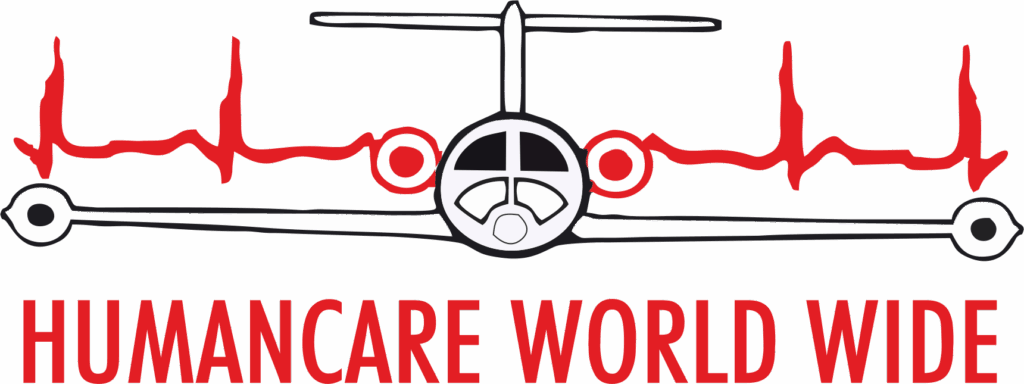Understanding Air Ambulance Costs: Factors, Savings, and Humancare World Wide’s Commitment to Quality Care
When a medical emergency arises, timely and efficient transportation can be a matter of life and death. Air ambulance services provide rapid, high-quality medical transport, but the costs associated with these services can be a concern for many families. At Humancare World Wide, we understand the importance of transparency and affordability. In this detailed blog, we will explore the factors that influence air ambulance costs and how we strive to provide cost-effective solutions while maintaining the highest standards of care.
The Factors Influencing Air Ambulance Costs
Several factors contribute to the overall cost of air ambulance services. Understanding these factors can help families make informed decisions and find the best options for their needs.
1. Distance Traveled
The distance between the pick-up location and the destination is one of the primary factors affecting the cost of air ambulance services. Longer distances require more fuel, more extensive flight planning, and potentially additional crew, all of which increase the overall cost.
- Short-Distance Flights: Typically within the same region or country, these flights are less expensive due to reduced fuel and operational costs.
- Long-Distance Flights: International or cross-country flights incur higher costs due to increased fuel consumption, extended flight times, and additional logistical considerations.
2. Type of Aircraft
The type of aircraft used for the air ambulance service significantly impacts the cost. Different aircraft have varying capabilities, capacities, and operating costs.
- Fixed-Wing Aircraft: These are ideal for long-distance flights and can accommodate more medical equipment and personnel. They are generally more expensive to operate.
- Helicopters: Suitable for short-distance or emergency evacuations, helicopters are more flexible but can be costlier per mile due to their operational dynamics.
3. Medical Needs and Equipment
The level of medical care required during transport plays a crucial role in determining the cost. More complex medical needs necessitate advanced equipment and specialized medical personnel.
- Basic Life Support (BLS): Suitable for patients with stable conditions who require minimal medical intervention.
- Advanced Life Support (ALS): Required for patients needing continuous monitoring and advanced medical care, including ventilators, defibrillators, and medication administration.
- Specialized Equipment: Some patients may require specific equipment such as ECMO (Extracorporeal Membrane Oxygenation), neonatal incubators, or cardiac support devices, which add to the cost.
4. Medical Personnel
The medical team accompanying the patient is another cost factor. Depending on the patient’s condition, the team may include paramedics, nurses, doctors, or specialists.
- Basic Medical Team: Typically includes paramedics or nurses for stable patients.
- Advanced Medical Team: Includes doctors or specialists for critical care patients, increasing the overall cost due to their expertise and the level of care provided.
5. Logistical Coordination
Logistical elements such as ground transportation, permits, and landing fees contribute to the overall cost. Coordinating with hospitals, arranging ground ambulances, and ensuring all regulatory requirements are met involve additional expenses.
Strategies for Reducing Air Ambulance Costs
While the cost of air ambulance services can be high, several strategies can help reduce the overall expense without compromising the quality of care. At Humancare World Wide, we are committed to finding the most cost-effective solutions for our clients.
Wing-to-Wing Transfers
Wing-to-wing transfers involve transferring a patient from one aircraft to another at a midway point. This approach can be more cost-effective for long-distance transports as it may utilize smaller, less expensive aircraft for different legs of the journey.
- Cost Savings: By using two different aircraft optimized for different segments of the trip, overall costs can be reduced.
- Efficiency: Ensures that the most appropriate aircraft is used for each leg, optimizing fuel efficiency and reducing operational costs.
Combination of Road and Air Ambulance
Using a combination of ground and air transportation can also help manage costs. This approach is especially effective for regions where air transport is only required for a portion of the journey.
- Ground Transport: Ground ambulances can be used for shorter distances or initial pickup and final delivery to the hospital, which is less expensive than air transport.
- Air Transport: Reserved for the critical, long-distance segment of the journey, ensuring rapid transport while minimizing overall costs.
Providing Transparent Pricing and Support
While the cost of air ambulance services can be high, several strategies can help reduce the overall expense without compromising the quality of care. At Humancare World Wide, we are committed to finding the most cost-effective solutions for our clients.
1. Wing-to-Wing Transfers
Wing-to-wing transfers involve transferring a patient from one aircraft to another at a midway point. This approach can be more cost-effective for long-distance transports as it may utilize smaller, less expensive aircraft for different legs of the journey.
- Cost Savings: By using two different aircraft optimized for different segments of the trip, overall costs can be reduced.
- Efficiency: Ensures that the most appropriate aircraft is used for each leg, optimizing fuel efficiency and reducing operational costs.
2. Combination of Road and Air Ambulance
Using a combination of ground and air transportation can also help manage costs. This approach is especially effective for regions where air transport is only required for a portion of the journey.
- Ground Transport: Ground ambulances can be used for shorter distances or initial pickup and final delivery to the hospital, which is less expensive than air transport.
- Air Transport: Reserved for the critical, long-distance segment of the journey, ensuring rapid transport while minimizing overall costs.
3. Providing Transparent Pricing and Support
At Humancare World Wide, we believe in providing transparent pricing and comprehensive support to help families navigate the financial aspects of air ambulance services. Here’s how we ensure you have all the information you need:
Detailed Cost Estimates
We provide detailed cost estimates upfront, outlining all potential expenses involved in the air ambulance service. This transparency helps families understand what to expect and plan accordingly.
- Breakdown of Costs: Our estimates include a breakdown of all costs, including aircraft type, medical personnel, equipment, and logistical fees.
- No Hidden Fees: We ensure there are no hidden fees or unexpected charges, providing peace of mind and financial clarity.
Flexible Payment Options
We understand that air ambulance costs can be a significant financial burden. To ease this burden, we offer flexible payment options and financing solutions.
- Payment Plans: Customizable payment plans allow families to manage expenses over time.
- Financing Solutions: We work with financial institutions to provide financing options for those who qualify, making high-quality medical transport more accessible.
4. Commitment to High-Quality, Cost-Effective Care
Our primary goal is to provide the highest standard of care while ensuring affordability. We continuously seek ways to optimize our services and reduce costs without compromising patient safety and care quality.
- Efficient Operations: By streamlining our operations and utilizing cost-effective strategies, we keep our services affordable.
- Investment in Technology: Advanced technology and efficient aircraft contribute to cost savings and improved patient outcomes.
- Patient-Centered Approach: We tailor our services to meet each patient’s unique needs, ensuring that every decision is made with their best interests in mind.
Here’s a case study on how we transferred our patient from bangladesh to Mumbai at a very economical cost
Affordable Air Repatriation: Human Care Worldwide’s Exceptional Service
Medical emergencies necessitating international transfers can be daunting and prohibitively expensive. Air repatriation, particularly from Bangladesh to India, typically involves high costs due to international airport handling fees and overfly permits, which can escalate expenses up to ₹25 lakhs. However, Human Care Worldwide offers an innovative solution that reduces these costs to ₹15 lakhs by incorporating a ground ambulance leg from Dhaka to Kolkata, while maintaining high standards of patient care.
The Challenge of Air Repatriation
Air medical evacuations are inherently complex and costly, requiring precise coordination, specialized equipment, and skilled medical personnel. Additional expenses such as international airport handling fees and overfly permits further drive up the costs, making air medical evacuations from Bangladesh to India potentially cost as much as ₹25 lakhs. Human Care Worldwide addresses this issue by implementing a cost-effective strategy without compromising on patient safety.
Human Care Worldwide’s Cost-Effective Solution
Humancare World Wide has devised a groundbreaking approach by integrating a ground ambulance leg from Dhaka to Kolkata. This method not only minimizes costs but also ensures a smooth and secure patient transfer. For example:
- Cost Reduction: By combining air and ground transport, we have successfully reduced the cost of repatriation from ₹25 lakhs to ₹15 lakhs, representing a cost saving of 40%.
- Efficiency: This approach allows for optimized fuel usage and operational efficiency, ensuring high standards of patient care while managing costs effectively.
Case Study: Critical Repatriation from Bangladesh to India
Patient Profile:
The patient, a 49-year-old male, diagnosed with left hemithorax, diabetes, hypertension, ischemic heart disease, chronic hepatitis C, recurrent UTI, old CVA, and on nasal oxygen, required transfer from Bangladesh to Jaslok Hospital, Mumbai. The medical team, comprising two doctors experienced in intensive care, traveled from Mumbai to Kolkata equipped with necessary medical tools and emergency medications.
The Journey:
Ground Ambulance Transfer from Dhaka to Kolkata:
The patient was transported from a Bangladeshi hospital to Kolkata by road, a 14-hour journey. Despite the long travel, the medical team ensured the patient’s stability through continuous monitoring.
Evaluation at Kolkata Airport:
On arrival in Kolkata, the patient was assessed by the medical team. He was clinically dehydrated and received IV fluids. A fever spike was managed with symptomatic medications.
Flight from Kolkata to Mumbai:
The patient was then transferred to a scheduled flight to Mumbai. During the 4-hour flight, he experienced a seizure, promptly managed with neuroprotective medication. Continuous monitoring ensured his stability throughout the journey.
Transfer to Jaslok Hospital, Mumbai:
Upon landing in Mumbai, the patient was moved from the General Aviation Terminal to a ground ambulance and safely delivered to the ER team at Jaslok Hospital.
Mission Accomplished: A Story of Expertise and Compassion
Despite the challenges, the mission was accomplished successfully, showcasing Human Care Worldwide’s expertise and dedication. By integrating a ground ambulance transfer and meticulous planning, the organization managed to reduce the repatriation cost to ₹15 lakhs, significantly lower than the typical ₹25 lakhs. This cost-effective approach allows patients to allocate more financial resources towards further treatment and recovery.
Value for Money and Exceptional Care
Human Care Worldwide understands the financial burden medical emergencies impose. Their mission is to deliver the highest level of care while ensuring affordable solutions. Their innovative approach and expertise guarantee that every patient receives the best care during their transfer. For those facing similar situations, Human Care Worldwide provides reassurance that they are in safe and capable hands, making air repatriation accessible and affordable, enabling patients and their families to focus on recovery and well-being.
Conclusion
Navigating the costs associated with air ambulance services can be challenging, but understanding the factors involved and the strategies available can help families make informed decisions. At Humancare World Wide, we are dedicated to providing transparent, cost-effective solutions while maintaining the highest standards of care. Whether through wing-to-wing transfers, a combination of road and air transport, or flexible payment options, we strive to make high-quality medical transport accessible to all who need it.
For more information about our air ambulance services and to receive a detailed cost estimate, contact us today. Our team is here to support you every step of the way, ensuring that you receive the best possible care at the most affordable price.


